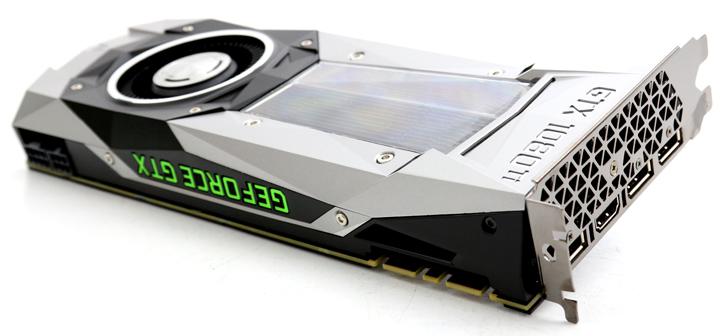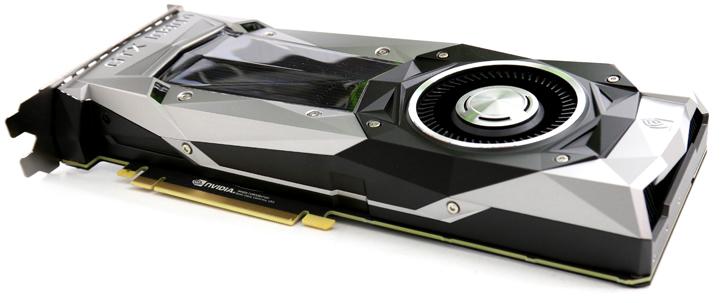Conclusion
Conclusion
Um yea,.. it's fast! It has been an interesting half year alright. Titan X has been dominating the charts, everybody also expected VEGA from team red, but their release is still pending. Meanwhile Nvidia was ready with the 1080 Ti and I literally do believe that they did not want to delay the launch any longer (to wait and adapt their perf config to Vega). It is now March 2017 and Nvidia figured to just let the beast out, and it is as good as we expected it to be. But yes, that 11 GB is weird. Totally.
It is my belief that Nvidia wanted to keep the price down and trade 1GB for 10% faster memory. Then they tweaked this SKU a tiny bit on base and turbo clock frequencies and there you have it, a product hovering at a Titan X performance level, sometimes a notch faster but mostly really close to it. The irony here is that today we tested the reference model, historically the slowest part. You can rest assured that board partner models are going to be clocked in the 1600 MHz base-clock domain with Boost frequencies in the 1800~1900 MHz range. So yes, there is another 10 maybe 20% performance left in the 1080 Ti which the board partners will completely tailor-fit to you preference. Next to that, the coolers from AIB partners will be better (we assume) as well. The current reference model is throttling, it'll quickly reach 84 Degrees C after which the GPU will start to downclock a bit. If the AIB partners can keep the 1080 Ti 10 Degrees C lower, then yes, there will be some performance gains to be made there as well. But even with a bit of throttling, the GeForce GTX 1080 Ti FE is a beast. Heck, this card sooo belongs in a gamer's rig, the ones that game at Ultra HD will see tremendous performance and a thrilling experience!
Aesthetics
For the GeForce GTX 1080 Ti series Nvidia tweaked the aesthetics of the cooler a bit more in line with the series GeForce GTX 1000 cards. So I think everybody will agree with me, it's just a normal looking Nvidia reference product. Some will dislike the fact that it does have a completely closed back-plate though (including myself). I remain skeptical about back-plates, they can trap heat and thus warm up the PCB. But the flip-side is that they do look better and can protect your PCB and components from damage. The overall looks are fine though.
Cooling & Noise Levels
The cooling itself really is at the same level it was, you can't really complain about it but it's not hugely impressive either. A bit trivial of course remains the temperature targets that Nvidia is using. The default setting for the 1080 Ti will be ~80 degrees C, meaning the card is allowed to run at roughly 80 Degrees C before ramping up the fan RPM or clocking down. Nvidia feels this is a nice balance in-between performance, power consumption and temperatures. The downside; above that 80 Degrees C the GPU (and this does happen with this card) will adapt and throttle down to be able to meet that temperature target. The Boost frequency however remains above that advertised, we've seen it in the 1700 MHz range when throttling. You can obviously change the temperature target of the fan RPM yourself, that will ramp up the noise levels badly. But at roughly 80 degrees C the noise levels are okay yet not silent. In idle you can barely hear the cooling solution (the fan does not turn off though) and under stress, well, you can hear airflow. That 80~84 degrees C range throughout the board, remains acceptable. On throttling, it does not have a huge impact. But with better cooling the card could be a notch faster alright. So the cold hard fact remains that this cooler is holding back the GPU a bit. The board partners will love to sink their teeth into this though.
Power Consumption
The GP102-350-A1 Pascal GPU is rated as having a 250 Watt TDP, our measurements show numbers slightly above that, keep in mind that this is a peak maximum value under full stress. At this performance level you are looking at 400~500 Watts for the PC in total, that is okay. We think a 600~650 Watt PSU would be sufficient and, if you go with 2-way SLI, an 800~900 Watt power supply is recommended. Remember, when purchasing a PSU aim to double up in Wattage as your PSU is most efficient when it is under 50% load. Here again keep in mind we measure peak power consumption, the average power consumption is a good notch lower depending on GPU utilization. Also, if you plan to overclock the CPU/memory and/or GPU with added voltage, please do purchase a power supply with enough reserve. People often underestimate it, but if you tweak all three aforementioned variables, you can easily add 200 Watts to your peak power consumption budget.
Gaming Performance
Now, I did not want to include 1080P results as I figured CPU limitation would be horrendously bad, well heck... it's not that bad TBH. From 1080P to Ultra HD the GeForce GTX 1080 Ti shows some serious numbers. But here's a paradox - the more difficult things get - the better the product will perform. E.g. Ultra HD is its true domain. Much like fine wine that ages well, that means this GeForce GTX 1080 Ti will last you a long time with future more GPU intensive games. This much performance and 11 GB of GDDR5X graphics memory helps you out in Ultra HD, DSR, VR and hefty complex anti-aliasing modes. That and of course the latest gaming titles. I consider this to be a very viable single GPU solution that allows you to game properly in Ultra HD with some very nice eye candy enabled with a single GPU. Drivers wise we can't complain at all, we did not stumble into any issues. Performance wise, really there's not one game that won't run seriously well at the very best image quality settings. Gaming you must do with a nice Ultra HD monitor of course, or at least a 2560x1440 screen. Now, we can discuss the advantages of that 11 GB frame-buffer, but hey, you can draw your own conclusions there as performance isn' t limited. And with 11 GB of it, you won't run out of graphics memory for the years to come, right? So in that respect the card is rather future proof.
No FCAT frametimes this round, the DVI converter has issues with the FCAT setup. We'll post a followup on FCAT with an AIB card that comes with proper DVI connector.
Overclocking
The boost modes can be configured with temperature targets relative to maximum power draw and your GPU Core frequency offsets. Saying that I realize it sounds complicated, but you'll have your things balanced out quite fast as these products are easy to tweak. This GPU can take a rather hefty Boost clock, once tweaked (start with +150 MHz on the GPU and a 120% power limiter) and you'll see your games rendering in the 1900~2000 MHz domain. The memory you'll be able to get close to roughly 11.5~12.0 GHz effective. For a GPU with 12 Billion transistors, you've gotta be at least a tiny bit impressed, right? With our tweak we averaged out at a ~2 GHz boost frequency, but had to increase fan RPM to prevent it from throttling down.
Concluding
The GeForce GTX 1080 Ti is the Titan X in disguise. Nvidia had to do something to it and decided to ditch 1GB of memory, bringing that VRAM number to a weird 11GB. This means slightly fewer ROPs and a 352-bit memory bus as well. But then they do use faster DDR5X memory and slightly faster than Titan X clock frequencies. So the performance drop is immediately annihilated and in fact the GeForce GTX 1080 Ti is as fast or sometimes even faster than the Titan X. And yeah, it might cost a tremendous 699 USD / 820 Euro, but you surely are receiving an exorbitant amount of performance for the exorbitant amount of money. And that's just the hardcore reality for this initial reference model, gawd only knows what the factory tweaked and cooled AIB cards from MSI, ASUS, Gigabyte, ZOTAC, Palit and all others will do. It could add another 10 to 20% performance for the higher binned SKUs, and that is bat**** crazy yo! Now let me bring you back to reality for a moment, if you are a 1080P or even 1440P gamer, you are probably and economically better off with a GeForce GTX 1070 or 1080, really. These cards just make the most sense. But then again, you've seen the numbers, for Ultra HD gamers and even 2560x1440 gamers this product works out well, really well. Overall we are impressed by the GeForce GTX 1080 Ti, very much so. The cooler is fighting that massive GPU though, it will throttle a bit under massive loads but that remains acceptable and throttling stays above the advertised Boost ranges. The NVIDIA GeForce GTX 1080 Ti is available starting from NVIDIA in their on-line web-shop, in a week or two/three we expect AIB partner cards with their customized models. And that's where things will get really serious. You name your game, go WQHD or Ultra HD and play your games, this graphics card has tremendous performance capabilities. The price is the one thing that remains a problematic thing for many, but this is Nvidia's fastest consumer based graphics card to date. If you can afford it, we can definitely recommend it. But my man, I cannot wait to see what the board partners are going to do with this graphics processor series!
If you are interested in an FCAT Frametime analysis of the GeForce GTX 1080 Ti, please read this article.
- H
Recommended Downloads
- Sign up to receive a notice when we publish a new article
- Or go back to Guru3D's front page




